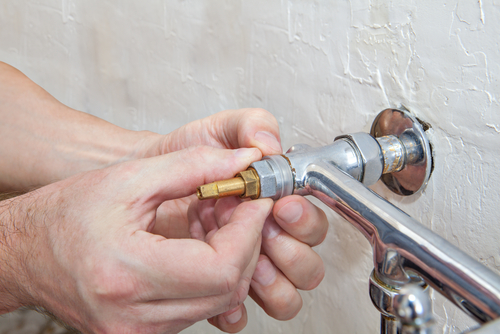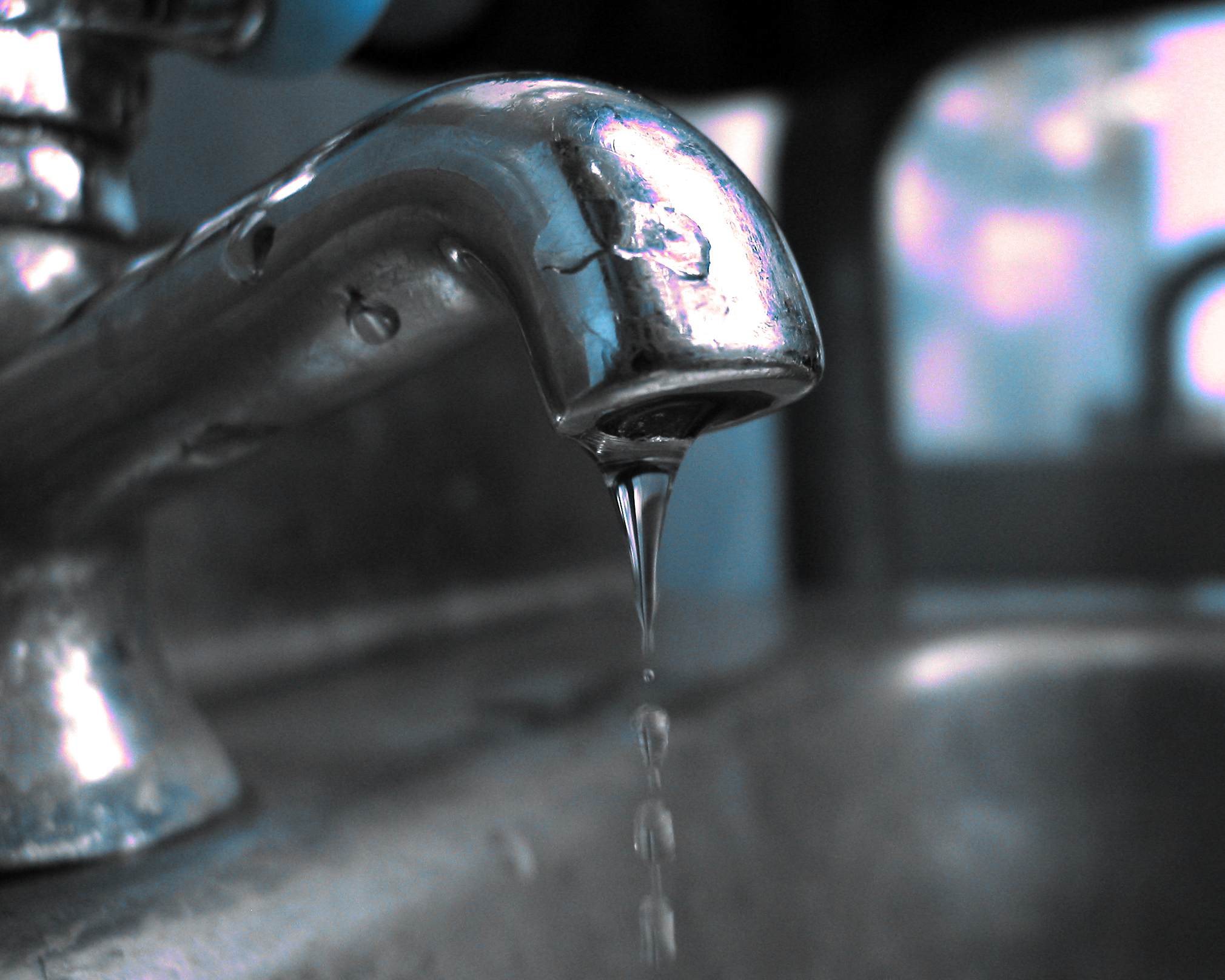Your Reasons Behind Repairing a Malfunctioning Faucet
Your Reasons Behind Repairing a Malfunctioning Faucet
Blog Article
Each person has got their unique thinking on the subject of What Causes Leaky Faucets & How To Fix Them.

Leaking faucets could feel like a small inconvenience, yet their influence exceeds simply the aggravation of the sound. From wasting water to incurring unneeded financial costs and health threats, disregarding a trickling faucet can cause different effects. In this post, we'll explore why it's vital to address this typical house concern promptly and effectively.
Waste of Water
Ecological Influence
Trickling faucets add substantially to water waste. According to the Epa (EPA), a single tap dripping at one drip per secondly can waste greater than 3,000 gallons of water per year. This not only pressures water sources however also influences ecological communities and wild animals dependent on them.
Financial Prices
Enhanced Water Bills
Past the environmental impact, leaking faucets can blow up water costs significantly. The gathered wastefulness over time equates right into higher utility costs, which might have been avoided with timely repair work.
Possible Residential Or Commercial Property Damage
Additionally, long term dripping can result in harm to components and surface areas bordering the tap. Water build-up can trigger staining, corrosion, and also structural concerns if left neglected, resulting in additional repair service costs.
Wellness Worries
Mold And Mildew and Mold Development
The constant visibility of dampness from a dripping faucet develops a suitable atmosphere for mold and mildew and mold growth. These fungis not only compromise indoor air quality however additionally posture wellness dangers, especially for people with breathing problems or allergic reactions.
Waterborne Diseases
Stagnant water in trickling taps can come to be a breeding ground for bacteria and other microorganisms, boosting the risk of waterborne conditions. Contaminants such as Legionella microorganisms thrive in stationary water, potentially leading to significant health problems when ingested or inhaled.
DIY vs. Professional Repair
Advantages and disadvantages of DIY Repair
While some might try to repair a dripping tap themselves, DIY repair services feature their very own collection of obstacles. Without proper knowledge and devices, do it yourself attempts can aggravate the issue or lead to insufficient repair services, extending the problem.
Advantages of Employing an Expert Plumber
Hiring a specialist plumber guarantees that the underlying cause of the trickling tap is resolved efficiently. Plumbers have the experience and tools to detect and repair tap problems efficiently, saving time and decreasing the risk of additional damages.
Step-by-Step Guide to Repairing a Dripping Faucet
Devices Required
Prior to attempting to fix a trickling faucet, collect the needed tools, consisting of a flexible wrench, screwdrivers, substitute components (such as washers or cartridges), and plumber's tape.
Common Tap Issues and Their Solutions
Identify the sort of tap and the particular concern creating the drip. Common problems include worn-out washers, rusty shutoff seats, or faulty O-rings. Refer to maker guidelines or on the internet tutorials for detailed guidance on fixings.
Safety nets
Normal Upkeep Tips
To stop trickling taps, carry out regular upkeep such as cleaning up aerators, checking for leaks, and changing worn-out parts quickly. In addition, consider setting up water-saving tools or updating to extra efficient fixtures.
Significance of Prompt Repairs
Resolving dripping faucets as quickly as they're noticed avoids further water wastefulness and potential damage, eventually saving both water and money in the long run.
Impact on Property Worth
Understanding of Well-Maintained Home
Preserving a building in good condition, consisting of addressing upkeep problems like leaking taps, improves its perceived worth and charm among possible buyers or lessees.
Influence on Resale Worth
Qualities with well-maintained plumbing components, consisting of faucets, command higher resale worths in the real estate market. Resolving dripping taps can contribute to a positive perception throughout residential or commercial property evaluations and settlements.
Ecological Responsibility
Private Payment to Preservation
Taking obligation for taking care of leaking faucets aligns with broader initiatives towards water preservation and environmental sustainability. Every individual's actions jointly make a substantial influence on maintaining priceless resources.
Sustainable Living Practices
By focusing on prompt fixings and embracing water-saving practices, individuals contribute to lasting living techniques that benefit both present and future generations.
Final thought
Attending to a trickling tap exceeds plain comfort; it's a necessary step toward preserving water, decreasing economic costs, and securing wellness and residential property. Whether with do it yourself repairs or professional help, taking action to deal with trickling faucets is a little yet impactful method to promote responsible stewardship of sources and contribute to a healthier, more sustainable future.
How to Fix a Leaky Faucet: Step-by-Step Repair Guide
A leaky faucet may seem like a simple annoyance, but if it's not fixed promptly, that leak could cost hundreds to potentially thousands. From water damage to mold, mildew, and high water bills, even a tiny leak can be catastrophic if left unattended. Damage like this can even affect the overall value of your home, so it's important to take the right approach for leaky faucet repair. You may need the help of a plumber in some cases, but we've got a few tips you can try on how to fix a leaky faucet before calling the pros.
Four Faucet Types
When you're learning how to fix a leaky faucet, the first step is knowing what kind of faucet you're working with! There are four common types.
Cartridge Faucets
Cartridge faucets come in one- or two-handled varieties. In one-handled cartridge faucets, hot and cold water combines in a single cartridge. In the two-handled versions, hot and cold water are controlled separately and mixed in the faucet.
Ball Faucets
Ball faucets have a single lever you push up and down to adjust the pressure and rotate to change the temperature. A slotted metal ball controls the amount of water allowed into the spout.
Compression Washer Faucets
They're the oldest type of faucet, but they're still used in many homes — especially older ones. Compression faucets have two separate handles that, when turned, raise or lower the washer that seals a water valve. This valve stops water from flowing through the faucet when it is turned off.
Disc Faucets
Disc faucets rarely need to be repaired due to their maintenance-free design. The water flow is controlled by two discs — the upper one raises and lowers against a fixed lower disc, creating a watertight seal. If your disc faucet starts leaking, you may need to replace the seals or clean residue buildup from the inlets.
Fixing a Leaky Faucet
Step 1: Turn Off the Water
Whether you're learning how to fix a leaky bathtub faucet or how to fix a leaky kitchen faucet, always turn off the water supply to your working area when you're fixing a leak. The last thing you want is a flood added to your list of things to fix.
Look for the shutoff valves below your sink or around the tub and turn them clockwise to stop the water flow. If your faucet doesn't have shutoff valves, you may need to turn off the water for the whole house. Check to make sure it's off by turning the faucet on. If nothing comes out, you're ready to start the repair.
Step 2: Take Apart the Faucet
How you disassemble your faucet depends on the type of fixture you have. You can use a flathead screwdriver to remove the caps on top of the handle or handles for cartridge and compression faucets. Inside, you should see handle screws. Unscrew these with a screwdriver to remove the handle.
Disc- and ball-style faucets will typically have an inlet screw near the handle, and removing that will reveal the interior of the faucet.
Detach the Valve Stem
For cartridge- and compression-style faucets, you'll see the inner valve stem or cartridge once you remove the faucet handles. If you have a compression faucet, unscrew the brass valve stem. If you have a cartridge faucet, pull out the cartridge. If your cartridge has been in place for a while, it may require some tools or extra force to remove it due to mineral deposits.
Examine and Replace Parts
Once you've removed the parts, check them out to confirm what needs to be replaced. You may see corroded rubber washers, O-rings, stems, or cartridges. On a ball-style faucet, check the seats and springs for damage.
If you need to repair a leaky disc faucet, check the inlet and seals on the lower disc.
Once you determine what parts must be replaced, visit your local hardware store. Bring the damaged parts with you to ensure you can purchase the correct components to replace them.
Clean Valves and Faucet Cavity
If you've removed a stem or cartridge, you may notice mineral buildup in the faucet's threads. Use white vinegar to clean the valve seat by soaking it for a few minutes, then scrub it away with a soft toothbrush and rinse with warm water. You can also clean the interior of the faucet in the same way.
Reassemble the Faucet
Once your faucet is cleaned and the required parts have been replaced, it's time to reassemble it. Put the pieces back together and slowly turn the water supply back on. Doing this slowly is crucial because too much initial water pressure can damage the new hardware you've just installed.
https://homewarranty.firstam.com/blog/how-to-fix-leaky-faucet

We had been made aware of that article about Should I Repair or Replace a Leaky Faucet? through a good friend on another web page. Sharing is nice. You just don't know, you may be helping someone out. Thank you so much for your time spent reading it.
Report this page